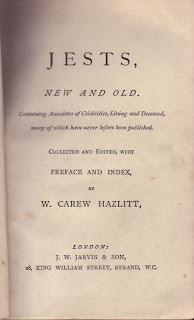
From the now rare book Elizabethan Demonology (Chatto, London 1880) by Thomas Alfred Spalding, this piece about an attempt to deify St. Vitus and, more importantly, Francis of Assisi. The book, which is dedicated to Robert Browning, mainly deals with mystical allusions in Shakespeare but has a certain amount on polytheism including this:
...the Roman Catholic form of Christianity, representing the oldest undisturbed evolution of a strictly monotheistic doctrine, is undeniably polytheistic. Apart from the Virgin Mary, there is a whole hierarchy of inferior deities, saints, and angels, subordinate to the One Supreme Being. This may possibly be denied by the authorized expounders of the doctrine of the Church of Rome; but it is nevertheless certain that it is the view taken by the uneducated classes, with whom the saints are much more present and definite deities than even the Almighty Himself.
It is worth noting, that during the dancing mania of 1418, not God, or Christ, or the Virgin Mary, but St. Vitus, was prayed to by the populace to stop the epidemic that was afterwards known by his name...
The posthumous history of Francis of Assisi affords a striking illustration of this strange tendency towards polytheism.
This extraordinary man received no little reverence and adulation during his lifetime; but it was not until after his death that the process of deification commenced. It was then discovered that the stigmata were not the only points of resemblance between the departed saint and the Divine Master he professed to follow; that his birth had been foretold by the prophets; that, like Christ, he underwent transfiguration; and that he had worked miracles during his life. The climax of the apotheosis was reached in 1486, when a monk, preaching at Paris, seriously maintained that St. Francis was in very truth a second Christ, the second Son of God; and that after his death he descended into purgatory, and liberated all the spirits confined there who had the good fortune to be arrayed in the Franciscan garb.
Spalding cites Maury, Histoire de la Magie, p. 354 as his source for this.



